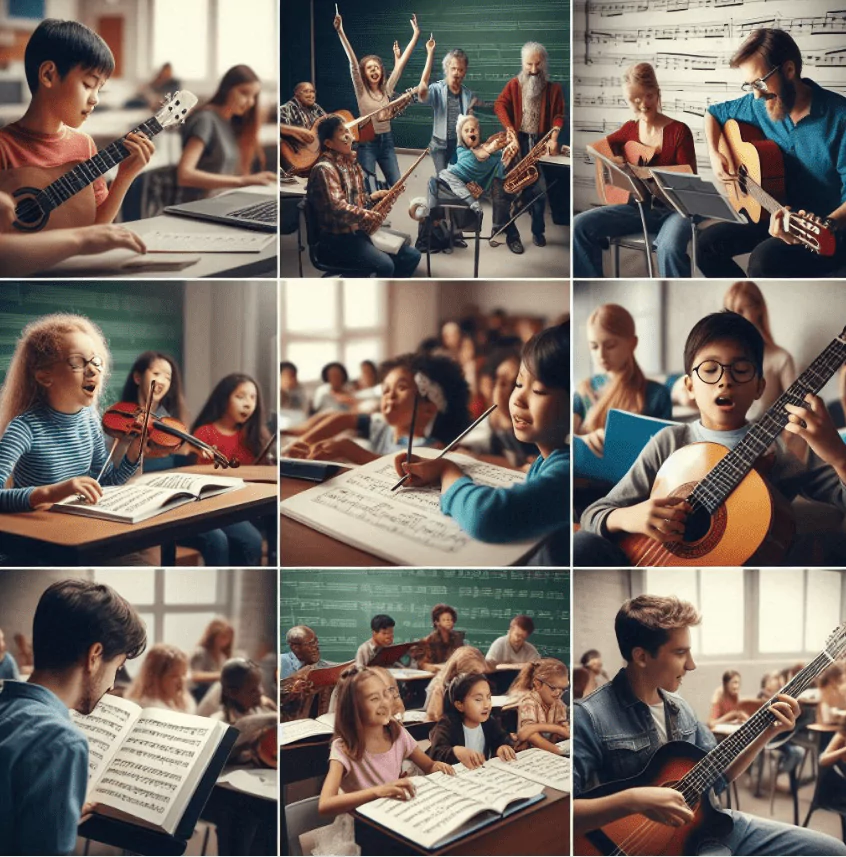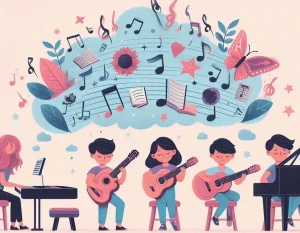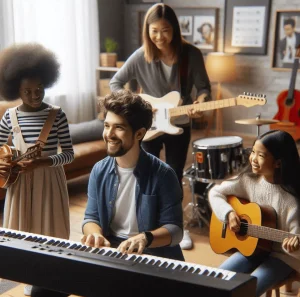Music into Education: How to Create Dynamic Music Classrooms That Spark Joy

Table of Contents
Music is a universal language, an ever-present rhythm that transcends borders and cultures, speaking directly to the human soul. Imagine walking into a classroom where this powerful medium is not only heard but felt, where every note played and every song sung lights up young minds with excitement and inspiration. This is the promise of Music Classrooms that truly spark joy, where education and melody intertwine to create an electrifying atmosphere of learning and creativity.

The Magic of Music Classrooms in Learning
Music Classrooms offer more than just a break from traditional academics; they provide a sanctuary where students can explore their creativity, build confidence, and develop a multitude of skills that extend far beyond the music room. When integrated effectively into education, music has the power to transform the learning experience, making it dynamic and engaging. This transformative potential is rooted in the unique ability of music to stimulate both hemispheres of the brain, fostering a holistic development that is rare in other disciplines.
Creating a Vibrant Musical Environment
To ignite this passion for learning through music, it is essential to craft a classroom environment that is as dynamic as the music itself. Start with the physical space: a well-organized, welcoming classroom can set the stage for creativity. Bright, colorful walls adorned with musical posters, instruments displayed invitingly, and a comfortable seating arrangement can make a world of difference. This environment should not only be visually appealing but also acoustically optimized, ensuring that every note resonates clearly, every rhythm is felt deeply.
Engaging Curriculum Design
A vibrant music classroom hinges on an engaging curriculum that goes beyond the basics. It should encompass a variety of musical genres, cultures, and histories, allowing students to appreciate the richness and diversity of music. Introducing students to different instruments, from the piano to the djembe, encourages them to explore and find their unique musical voice. Incorporate technology, like digital music composition tools and apps, to blend traditional music education with modern innovations. This fusion keeps students intrigued and eager to learn more.
Encouraging Active Participation
Active participation is the heartbeat of a dynamic music classroom. Encourage students to be more than passive listeners; involve them in every step of the musical journey. This could be through group performances, solo recitals, or collaborative compositions. Facilitating regular opportunities for students to showcase their talents boosts their confidence and fosters a sense of achievement. Moreover, group activities teach them the invaluable skills of teamwork and collaboration, essential both in and out of the classroom.
Fostering a Joyful Learning Experience
The ultimate goal of integrating music into education is to cultivate a joyful learning experience. Joy in learning comes from a sense of accomplishment, a connection to the subject, and the pure delight of discovery. Music naturally lends itself to this, as it is inherently expressive and emotive. Celebrate small victories, like mastering a difficult piece or composing a first song, to keep the momentum going. Create an atmosphere where mistakes are seen as part of the learning process, encouraging students to experiment and take risks.
Building Lifelong Skills
Music Classrooms are not just about teaching music; they are about building lifelong skills. From enhancing memory and cognitive development to improving emotional intelligence and social skills, the benefits of music education are extensive. Students learn discipline through regular practice, patience through mastering an instrument, and resilience through performance. These skills are invaluable, extending far beyond their school years into every aspect of their lives.
The Role of Educators
The role of the music educator is pivotal in creating a dynamic classroom that sparks joy. Educators must be passionate, not just about music but about teaching and inspiring. They should strive to be mentors who guide, motivate, and ignite a love for music in their students. Continuous professional development, staying abreast of the latest educational strategies and musical trends, ensures that they can provide the best possible learning experience.
Community Involvement
Engaging the wider community can also amplify the impact of Music Classrooms. Collaborations with local musicians, performances at community events, and partnerships with music organizations provide students with real-world experiences and opportunities to showcase their talents. These connections enrich the students’ learning experience and foster a sense of community pride and involvement.
Embracing Inclusivity
Inclusivity is a cornerstone of any dynamic music classroom. Music has the power to unite, transcending differences and bringing people together. Ensure that every student, regardless of their background or ability, feels welcomed and valued. Adapt teaching methods to accommodate diverse learning styles and needs, making music education accessible to all. This inclusive approach not only enriches the classroom environment but also teaches students the importance of empathy and respect.
Conclusion: The Joy of Music Education
The integration of music into education is a powerful tool that can transform classrooms into vibrant, joyful spaces where students are excited to learn and grow. By creating dynamic Music Classrooms, we can harness the magic of music to foster creativity, build essential life skills, and inspire a lifelong love of learning. This journey begins with a commitment to crafting engaging, inclusive, and inspiring musical experiences that resonate with every student, sparking joy that echoes far beyond the classroom walls.




